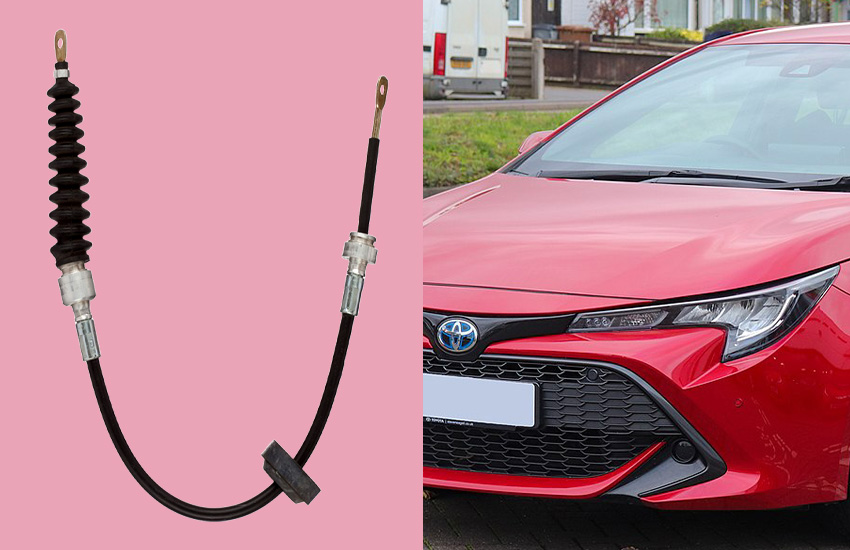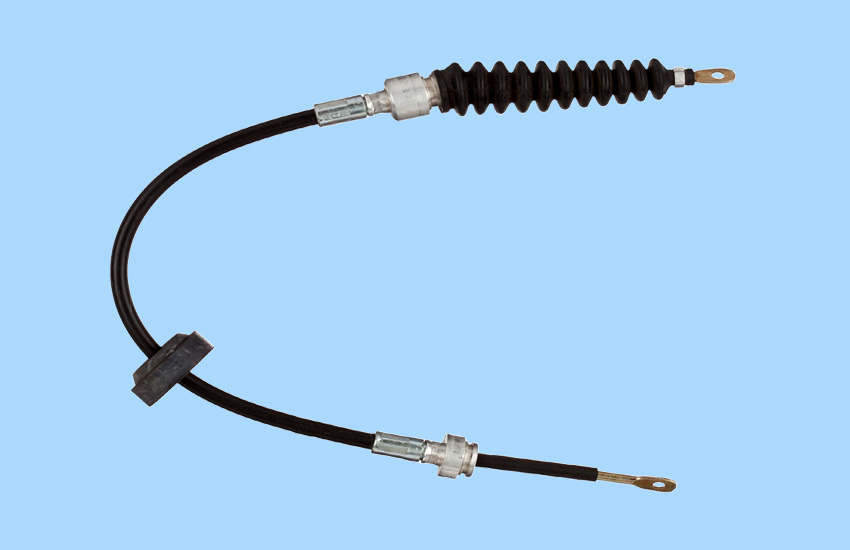As an Amazon Associate, I earn from qualifying purchases at no extra cost to you.
How to Easily Adjust Your Automatic Transmission Shift Cable
You might find that your car's automatic transmission isn't shifting smoothly. It can be a hassle, but don't worry! Adjusting the shift cable is something you can do yourself. It's easier than it sounds. In this guide, we'll walk you through the simple steps to adjust your automatic transmission shift cable. With just a few basic tools and some easy-to-follow instructions, you’ll have your car shifting like new in no time. Let's get started!
Understanding the Transmission Shift Cable
Understanding the transmission shift cable is pretty simple. This cable is like a messenger for your car. It connects the gear shifter inside your car to the transmission, which is the part that changes gears. When you move the gear stick, the cable tells the transmission to switch gears. This helps your car run smoothly.
The shift cable is important because it helps you control your car's movement. If it gets worn out or damaged, you might have trouble shifting gears. This can make driving your car harder or even unsafe. For example, you might find it hard to go from park to drive, or your car might get stuck in one gear.
Regular checks can help you spot problems early. Look for any signs of wear or fraying in the cable. If you notice anything wrong, it’s a good idea to get it fixed by a mechanic. Taking care of the shift cable will keep your car running smoothly and make driving a lot easier.

How to Adjust Your Automatic Transmission Shift Cable
Adjusting your automatic transmission shift cable can make your car's shifting smoother. Here's a simple guide to help you adjust it correctly.
1. Preparation
Before you start, make sure your car is parked safely. Find a flat area where you can work. This is important because a level surface helps you avoid any accidents or mistakes. After parking, set the parking brake. This will keep the car from rolling while you work.
Next, you need to lift the front of your car so you can reach the shift cable. Use a jack to lift the car up. Once it's lifted, put jack stands under the car. These stands will hold the car up securely while you're working. Always double-check that the car is stable before you start working underneath it.
Locate the shift cable. This cable connects the gear selector inside your car to the transmission. It might be a bit tricky to find, but look near where the gear lever connects to the transmission. The cable is usually attached with clips or bolts.
2. Inspect the Shift Cable
Now, it's time to check the shift cable. Look for any signs of damage. The cable should be intact and not frayed or broken. If the cable is damaged, you will need to replace it before adjusting it.
Next, check where the cable connects to both ends. The connection points should be secure. If the cable is loose or disconnected, it might cause shifting problems. Make sure the cable is firmly attached to the gear selector and the transmission.
3. Adjust the Shift Cable
To start adjusting, find the adjustment point on the cable. This is usually where the cable connects to the transmission or the gear selector. You will see an adjuster or a locknut that can be loosened.
Use a wrench or screwdriver to loosen the adjuster. Be careful not to remove it completely—just loosen it enough so you can move the cable. Inside the car, move the gear selector to the "Neutral" position. You also need to make sure the transmission is in "Neutral" as well. This ensures that the cable is properly aligned.
Once the gear selector and transmission are both in "Neutral," you can start adjusting the cable. Gently pull or push the cable to adjust its tension. It should be snug but not too tight. You need to find a balance where the cable isn't loose but also isn't overly tight.
After adjusting the cable, tighten the adjuster or locknut securely. This will keep the cable in the correct position.
4. Test the Adjustment
After adjusting, it's important to test the gear shifts. Start your car and move the gear selector through all the gears. Check if the car shifts smoothly from one gear to another. Each gear should engage properly without any hesitation or difficulty.
If you notice any problems, such as the car not shifting correctly or the gear selector feeling loose, you may need to make more adjustments. Sometimes, a small tweak can fix shifting issues.
5. Final Steps
When you're done adjusting, lower the car back to the ground. Remove the jack stands and carefully lower the car using the jack. Make sure the car is stable before you get underneath it.
Finally, take your car for a short test drive. This will help you check if everything is working correctly. Drive around and pay attention to how the car shifts. If it still doesn't feel right, consider checking the adjustment again or asking a mechanic for help.
6. Consult the Owner's Manual
It's always a good idea to check your car's owner manual. The manual might have specific instructions or details about your car's shift cable. Following these guidelines ensures you're doing the adjustment correctly according to your car's make and model.
By following these simple steps, you can adjust your automatic transmission shift cable and help your car shift gears smoothly. If you continue to have problems, it might be best to consult a professional mechanic for assistance.

How Do I Replace Automatic Transmission Shift Cable?
Replacing the transmission shift cable can be a bit tricky, but here’s a simple guide to help you:
- Find the Right Parts: Get a new shift cable that fits your car's make and model. You can ask for this at an auto parts store or online.
- Prepare Your Car: Make sure your car is on a flat surface and the parking brake is on. It’s also a good idea to disconnect the battery to avoid any electrical issues.
- Locate the Cable: Look under the car and find the shift cable. It usually connects to the transmission and the gear shifter.
- Remove the Old Cable: First, disconnect the cable from the gear shifter inside the car. You might need to remove some panels or trim to reach it. Then, go under the car and disconnect the cable from the transmission. It might be held on with clips or bolts.
- Install the New Cable: Attach the new cable to the transmission first, then connect it to the gear shifter. Make sure everything is secure and properly aligned.
- Test It Out: Once the new cable is in place, test the gear shifter to make sure it works smoothly. Check that you can shift gears without any problems.
- Reassemble and Test Drive: Put back any panels or trim you removed. Finally, take your car for a short drive to make sure everything is working correctly.
If you're unsure or uncomfortable doing this yourself, it's always a good idea to ask a mechanic for help.
Questions in Your Mind
Is it necessary to adjust the shift cable regularly?
Adjusting the shift cable is not usually required on a regular basis. However, if you notice shifting problems or if the cable seems loose or damaged, it's a good idea to check and adjust it. Regular vehicle maintenance can help you spot issues before they become major problems.
Can I adjust the shift cable without lifting the car?
It is generally recommended to lift the car to have clear access to the shift cable, especially if it is located underneath. Trying to adjust it without lifting the car might make it difficult to reach and see what you're doing, increasing the risk of mistakes.
Do I need any special tools to adjust the shift cable?
For most shift cable adjustments, you'll need basic tools like a wrench or screwdriver. In some cases, a socket wrench set might be required. Always refer to your vehicle's owner manual for specific tool recommendations.
Is it okay to drive if the shift cable is not adjusted correctly?
Driving with an incorrectly adjusted shift cable can cause shifting problems and potentially damage your transmission. It's important to ensure the cable is adjusted properly before driving to avoid any further issues.
Can I adjust the shift cable myself or should I take it to a mechanic?
You can adjust the shift cable yourself if you are comfortable working on your vehicle and have the right tools. However, if you are unsure or the problem persists, it's best to take your car to a professional mechanic for proper adjustment and inspection.
Do I need to adjust the shift cable if my car has trouble going into gear?
Yes, trouble going into gear could be a sign that the shift cable needs adjustment. Incorrect tension or alignment of the cable can affect gear engagement. Check and adjust the cable if you experience this issue.
Can the shift cable adjustment affect other parts of the transmission?
Improper adjustment of the shift cable can cause misalignment and affect how the transmission engages with the gear selector. This can potentially lead to transmission issues over time, so it's important to adjust it correctly.
Is it safe to use lubricant on the shift cable?
Using a small amount of lubricant on the shift cable can help with smooth operation, but be careful not to overapply it. Excess lubricant can attract dirt and debris, which might cause problems in the long run.
Do I need to check the shift cable after replacing it?
Yes, after replacing a shift cable, it's important to check and adjust it to ensure it is properly aligned and tensioned. This ensures the new cable works correctly with your vehicle's transmission.
Can a worn-out shift cable cause transmission slippage?
Yes, a worn-out or improperly adjusted shift cable can cause transmission slippage. If the cable is not functioning correctly, it might not fully engage the gears, leading to slippage and other transmission issues.


